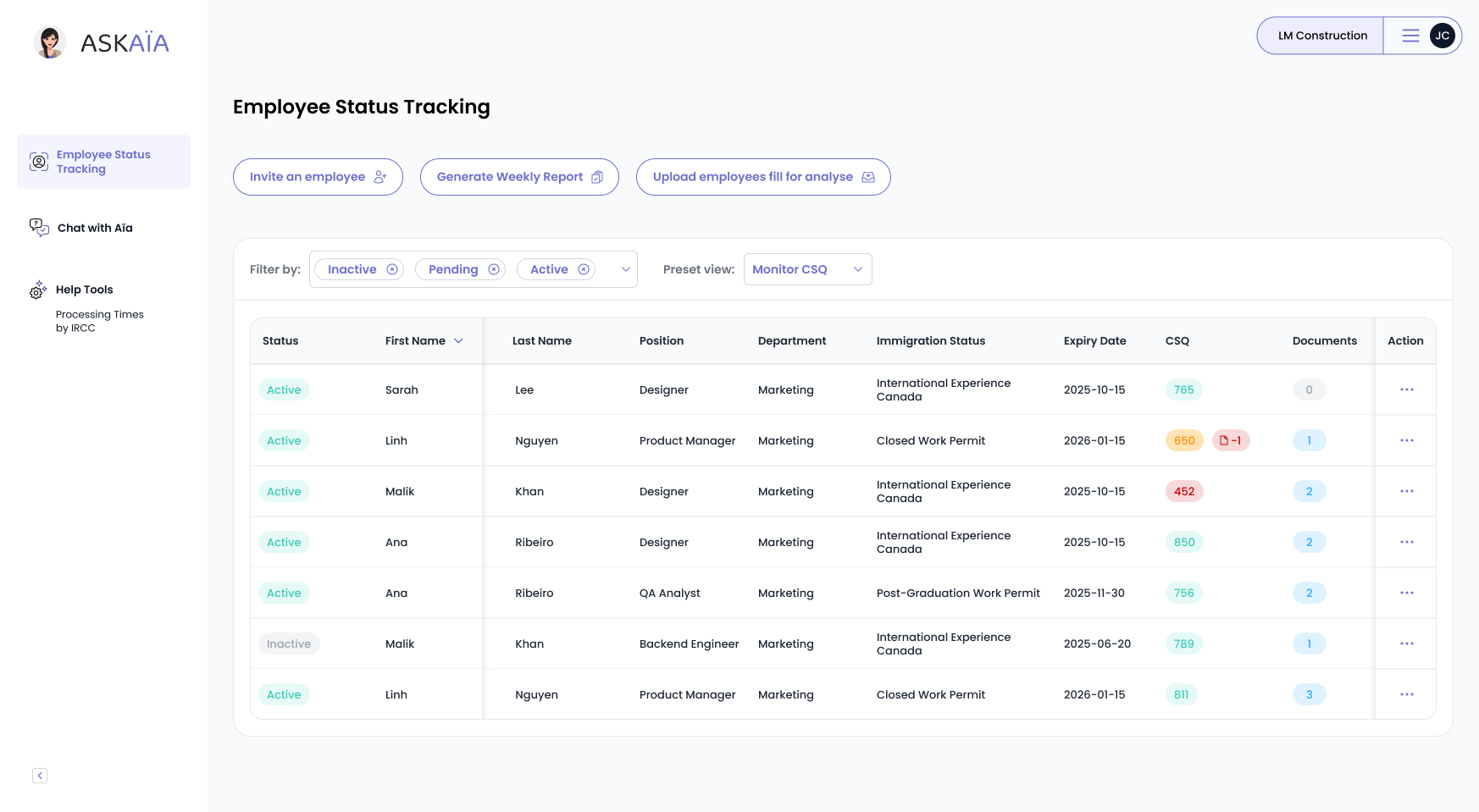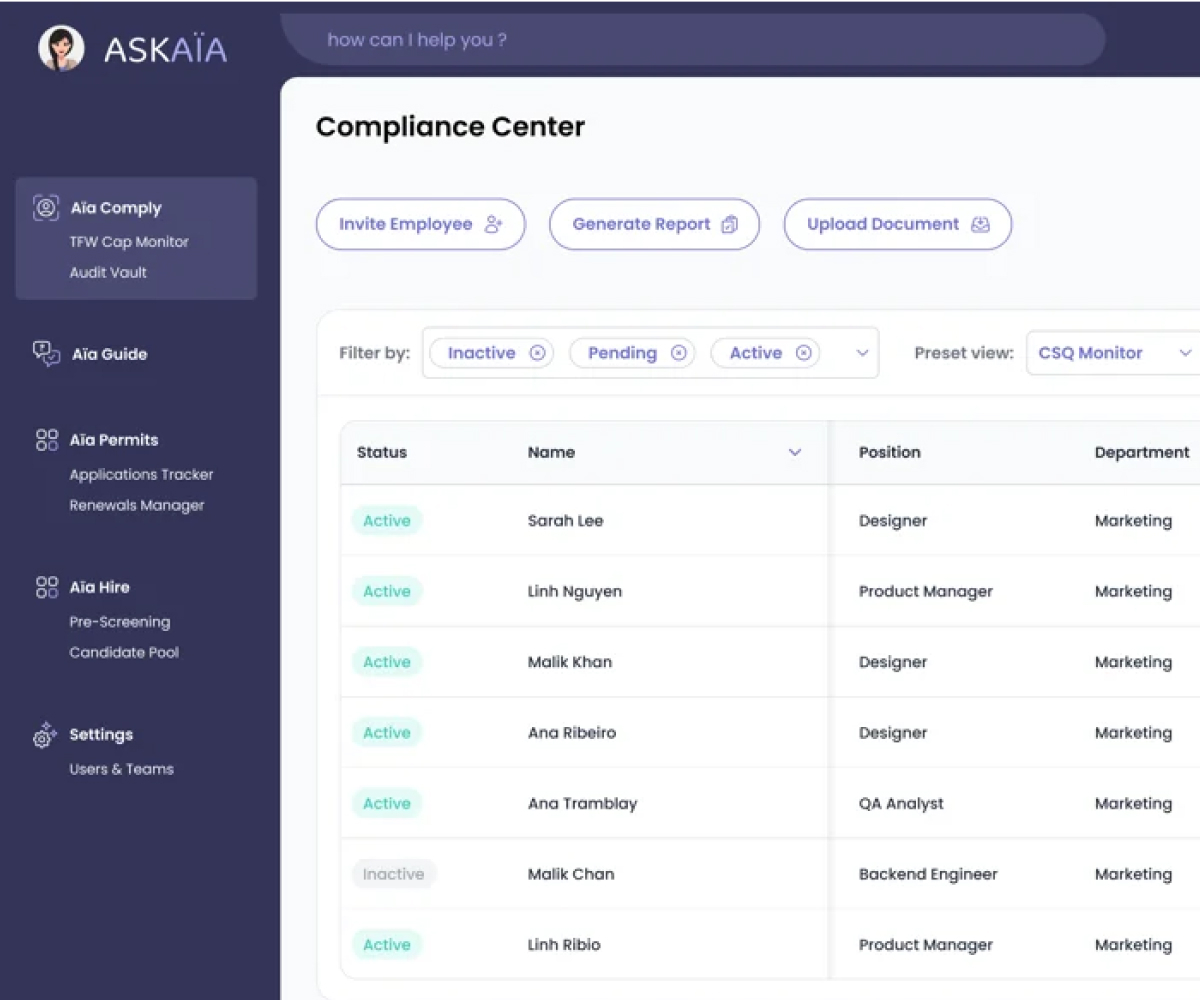Master LMIA Compliance: Best Practices for Policies and Record-Keeping

For Canadian employers, LMIA compliance is far more than securing initial approvals, it’s an ongoing obligation rooted in clear policies and rigorous record-keeping. Employment and Social Development Canada (ESDC) reports that roughly 2,100 employer inspections were carried out in fiscal 2022‑2023, with 94 % found compliant—meaning only about 6 % showed at least one infraction. Even minor lapses can lead to fines, suspension of hiring privileges, and publication on the federal list of non‑compliant employers.
At a Glance
- 28% of Employers Audited: In 2023, over 1,700 inspections led to warnings, fines, or bans for nearly a third of employers (ESDC).
- $100,000 Penalty Risk: Failing to maintain accurate records can result in fines of up to $100,000 per violation.
- 6-Year Retention Rule: Employers must keep LMIA-related records for six years and be able to produce them promptly.
Understanding LMIA Record-Keeping Requirements
Maintaining comprehensive records is the foundation of LMIA compliance. Without proper documentation, it becomes nearly impossible to prove that you’ve met your obligations as an employer.
Key Requirements:
- Retention Period: Six years from the start of employment.
- Required Documents:
- Recruitment efforts and advertising proofs.
- Signed job offers and contracts.
- Payroll records showing wage payments.
- Copies of work permits and LMIA decisions.
- Access: You must be able to provide records promptly.
LMIA Record-Keeping at a Glance
| Record Type | Retention Period | Format |
| Recruitment Records | At least 6 years after the hiring decision | Digital or hard copy |
| Employment Contracts | 6 years after employment ends | Signed originals or scans |
| Payroll Records | 6 years after payment date | Payroll system or statements |
| Work Permit Copies | While employment continues + 6 years | PDF or photocopy |
| LMIA Decision Letters | 6 years after LMIA issuance | Digital file recommended |
Developing Clear Compliance Policies
Strong compliance policies ensure that everyone in your organization understands their responsibilities. They also make it easier to maintain consistency over time, even when your team changes.
Best Practices for Policy Development:
- Assign a compliance officer or senior HR lead.
- Create a written policy manual defining who collects, stores, and audits records.
- Use a compliance calendar to track deadlines for renewals and retention.
- Review and update policies annually to reflect changes in regulations.
A Compliance Timeline to Guide Your Process
Having a clear timeline makes it easier to stay organized and avoid missing important deadlines. This timeline outlines when and how to act at each stage of the LMIA process.
LMIA Compliance Timeline
| Stage | Action Required |
| Before Hiring | Conduct recruitment, collect proofs, and submit LMIA. |
| At Start of Employment | Issue signed contract, copy work permit, set up records. |
| Year 1 | Review records for accuracy and completeness. |
| Years 2–5 | Keep records accessible and update as needed. |
| Year 6 | Prepare records for secure disposal if allowed. |
Reminder: Calendar alerts help ensure nothing slips through the cracks.
Training HR Teams Effectively
Training ensures that your policies don’t just exist on paper but actually guide day-to-day actions. When HR staff know what to do, mistakes are less likely.
Training Essentials:
- Hold annual refresher sessions.
- Develop quick-reference guides for processes and timelines.
- Run scenario-based workshops, such as mock inspections or audits.
- Include LMIA training in onboarding.
Example: A logistics firm cut compliance errors by 60% after implementing quarterly workshops and assigning a compliance officer.
Using Digital Tools to Simplify Compliance
Technology makes it easier to keep records organized, secure, and accessible when needed. Digital tools can also save time and reduce human error.
Recommended Solutions:
- Secure cloud storage for contracts and documents.
- Compliance software with automated reminders.
- Digital audit trails to prove when files were created and updated.
- Access controls to protect sensitive records.
Explore common pitfalls in Top Employer Mistakes That Lead to LMIA Refusals.
Your LMIA Compliance Checklist
Use this checklist to confirm you have every essential process in place.
- Assign a compliance officer or HR lead.
- Create a policy manual outlining processes.
- Collect and store all recruitment and payroll records.
- Schedule annual training sessions for HR teams.
- Use a compliance calendar and digital reminders.
- Retain all documentation for six years.
- Conduct annual self-audits to identify gaps.
Compliance vs. Non-Compliance: What’s at Stake?
| Category | Compliant Employer | Non-Compliant Employer |
| Eligibility to Hire TFWs | Maintained | Suspended or revoked |
| Fines and Penalties | None or minimal risk | Up to $100,000 per violation |
| Insurance Premiums | Stable or minor increases | Higher premiums or exclusions |
| Contract Opportunities | Eligible for public and private bids | Disqualified for 1–5 years |
| Reputation | Positive employer brand | Public listing as non-compliant |
LMIA compliance isn’t just a checkbox, it’s a continuous commitment. With clear policies, engaged HR teams, and digital tools, you’ll protect your contracts, your reputation, and your employees.
Don’t leave compliance to chance. Download our free Work Permit Risk Playbook and get practical strategies to protect your business from costly mistakes. Even reputable, well-resourced employers have faced penalties for preventable mistakes. The best defense is readiness.

Let’s get your demo started
Book a demo
You May Also Like
These Related Stories

The Hidden Costs of Non-Compliance: Beyond the Fine
Many Canadian employers assume that immigration compliance is only about avoiding fines. But regulatory breaches often lead to severe indirect costs, …

Aïa Comply - Canada's new HR compliance standard
Each compliance error is costly, with fines of up to $100,000 and thousands of lost HR hours. After analyzing over 5,000 real-life cases and 100 HR in …

Top Compliance Risks in Key Canadian Industries
Compliance failures don’t look the same in every sector. From trucking fleets to healthcare providers, each industry faces unique vulnerabilities that …

